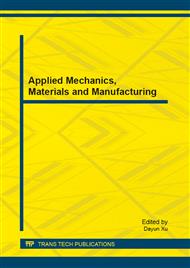[1]
Khademhosseini A, Langer R, Borenstein J, et al. Microscale technologies for tissue engineering and biology. Proceedings of the National Academy of Sciences of the United States of America, 2006, 103(8): 2480-2487.
DOI: 10.1073/pnas.0507681102
Google Scholar
[2]
Pountos I, Corscadden D, Emery P, et al. Mesenchymal stem cell tissue engineering: techniques for isolation, expansion and application. Injury, 2007, 38: S23-S33.
DOI: 10.1016/s0020-1383(08)70006-8
Google Scholar
[3]
Xu G, Zhang Y, Zhang L, et al. The role of IL-6 in inhibition of lymphocyte apoptosis by mesenchymal stem cells. Biochemical and biophysical research communications, 2007, 361(3): 745-750.
DOI: 10.1016/j.bbrc.2007.07.052
Google Scholar
[4]
Wei H, Li Z, Hu S, et al. Apoptosis of mesenchymal stem cells induced by hydrogen peroxide concerns both endoplasmic reticulum stress and mitochondrial death pathway through regulation of caspases, p.38.
DOI: 10.1002/jcb.22785
Google Scholar
[5]
Gao F, Hu X-y, Xie X-j, et al. Heat shock protein 90 protects rat mesenchymal stem cells against hypoxia and serum deprivation-induced apoptosis via the PI3K/Akt and ERK1/2 pathways. Journal of Zhejiang University SCIENCE B, 2010, 11(8): 608-617.
DOI: 10.1631/jzus.b1001007
Google Scholar
[6]
Van den Bos C, Silverstetter S, Murphy M, et al. p21cip1 rescues human mesenchymal stem cells from apoptosis induced by low-density culture. Cell and tissue research, 1998, 293(3): 463-470.
DOI: 10.1007/s004410051138
Google Scholar
[7]
Geiger B, Bershadsky A, Pankov R, et al. Transmembrane crosstalk between the extracellular matrix and the cytoskeleton. Nature Reviews Molecular Cell Biology, 2001, 2(11): 793-805.
DOI: 10.1038/35099066
Google Scholar
[8]
EGB K A, lngegneria Genetica C. Mechanotransduction across the cell surface and through the cytoskeleton. Science, 1993, 260: 21.
Google Scholar
[9]
Ingber D E. Tensegrity: the architectural basis of cellular mechanotransduction. Annual review of physiology, 1997, 59(1): 575-599.
DOI: 10.1146/annurev.physiol.59.1.575
Google Scholar
[10]
Singhvi R, Kumar A, Lopez G P, et al. Engineering cell shape and function. Science, 1994, 264(5159): 696-8.
Google Scholar
[11]
Chen C S, Mrksich M, Huang S, et al. Micropatterned surfaces for control of cell shape, position, and function. Biotechnology Progress, 1998, 14(3): 356-363.
DOI: 10.1021/bp980031m
Google Scholar
[12]
Chen C S, Mrksich M, Huang S, et al. Geometric control of cell life and death. Science, 1997, 276(5317): 1425-8.
DOI: 10.1126/science.276.5317.1425
Google Scholar
[13]
Folkman J, Moscona A. Role of cell shape in growth control. (1978).
Google Scholar
[14]
Thery M, Pepin A, Dressaire E, et al. Cell distribution of stress fibres in response to the geometry of the adhesive environment. Cell Motil Cytoskeleton, 2006, 63(6): 341-55.
DOI: 10.1002/cm.20126
Google Scholar
[15]
Gourlay C W, Ayscough K R. The actin cytoskeleton: a key regulator of apoptosis and ageing? Nature Reviews Molecular Cell Biology, 2005, 6(7): 583-589.
DOI: 10.1038/nrm1682
Google Scholar


